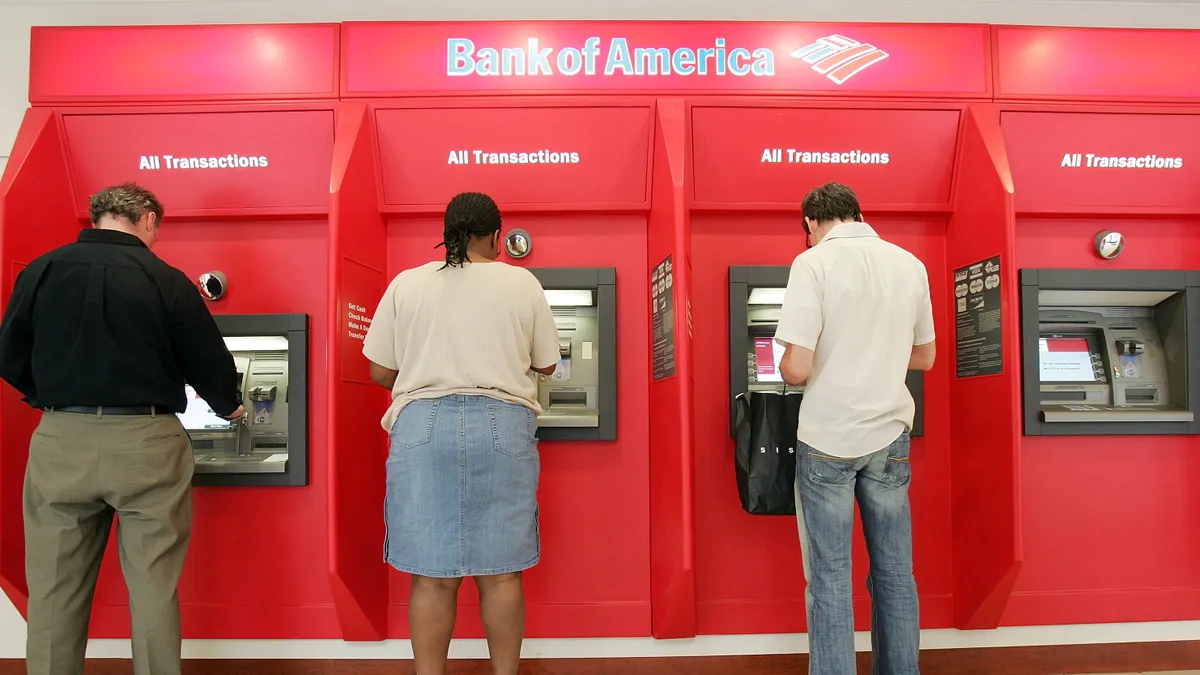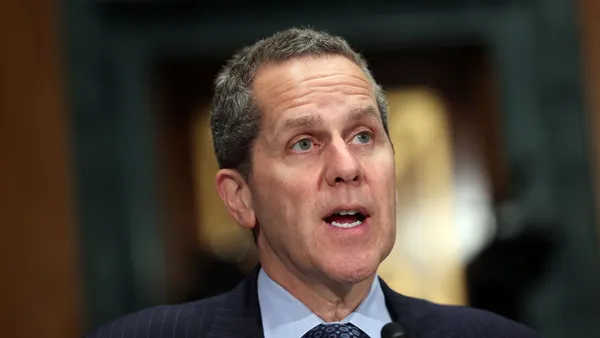Bank of America increased its quarterly dividend to 24 cents per share from 22 cents, starting in the third quarter, the bank said Wednesday.
The bank had delayed the announcement for five days, according to the Financial Times, as it sought “to understand differences” between the results of the Federal Reserve’s annual stress test and internal tests run by its own risk managers.
The Fed projected Bank of America would post $22.3 billion in other comprehensive income over the nine quarters covered under the central bank’s hypothetical adverse scenario. Bank of America, however, projected $12.5 billion, according to Bloomberg.
Meanwhile, Bank of America calculated it would lose $52 billion before taxes under the test’s circumstances, Bloomberg and the Financial Times reported. The Fed, however, projected the bank would lose much less: $23 billion.
By the Fed’s calculations, Bank of America’s capital ratio — capital as a percentage of total assets — would fall to 10.6%. According to the bank’s own calculations, that number would be 8.3%, according to the Financial Times.
Scott Siefers, a bank analyst at Piper Sandler, credited unrealized losses in Bank of America’s bond portfolio for much of the discrepancy. Those losses have ballooned amid rising interest rates, but the Fed’s stress test envisions a scenario in which interest rates drop to near zero. Under those conditions, Bank of America would see a $22 billion gain, the Financial Times reported. Bank of America’s internal test hadn’t counted on such a windfall.
“We appreciate that BofA is being transparent in its desire to understand the ... difference between its own test and the Fed’s,” Siefers wrote in a note to clients seen by the Financial Times. “Bottom line, a little more uncertainty in BofA’s results than we would like, but hopefully no change to the end result.”
Bank of America isn’t the only top-six U.S. bank to have “initiated dialogue” with the Fed over variations on stress-test math. Citi, too, in a statement Monday, said it had flagged to the central bank a discrepancy in a nine-quarter projection of non-interest income.
Contrary to Bank of America, Citi’s risk managers painted a rosier picture than the Fed. Citi’s internal stress test results predicted $64.4 billion of non-interest income over nine quarters, according to Bloomberg. The Fed, by contrast, forecast $43.9 billion.
By Citi’s calculations, the bank’s capital ratio would be 10.6%, according to the Financial Times, compared with 9.1% by the Fed’s estimate.
Citi nonetheless boosted its dividend Friday to 53 cents per share from 51 cents, despite seeing an increase in its stress capital buffer requirement from 4.0% to 4.3%.
“While we would have clearly preferred not to see an increase in our stress capital buffer, these results still demonstrate Citi’s financial resilience through all economic environments,” CEO Jane Fraser said Friday.
Outside the top six U.S. banks, Capital One, Truist and Citizens Bank signaled Friday that their stress capital buffers would also increase as a result of the Fed’s test.
Stress test-connected capital requirements take effect Oct. 1 and last through Sept. 30, 2024 — a time frame that will likely see finalized Basel III rules and potential changes to how the central bank supervises financial institutions in the wake of the Signature, First Republic and Silicon Valley Bank failures.
Bank of America on Wednesday became the last of the six largest U.S. lenders to detail how the stress test results would affect dividends. All six announced dividend increases this year — a departure from 2022, when Citi and JPMorgan Chase kept their shareholder payouts steady from a year earlier.
JPMorgan Chase on Friday boosted its dividend to $1.05 per share from $1. Wells Fargo increased its dividend to 35 cents per share from 30. Morgan Stanley boosted its per-share return to 85 cents from 77.5 — and said it was reauthorizing a $20 billion stock buyback plan.
Goldman Sachs increased its dividend to $2.75 per share from $2.50, despite a discrepancy between its own calculations and the Fed’s. Goldman estimated its capital ratio would fall to 9.5% under the central bank’s stress test scenario, but the Fed predicted 10.1%, according to the Financial Times.














